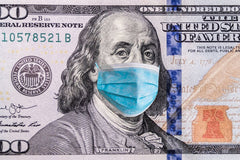Your cart is currently empty.
Free ($50 value) Laptop Stand on Orders Over $1,000
Free shipping on orders over $50

- Apr, 24 , 17
- 0 comments
A Brief History of Gold-Backed and Gold-Lacked US Currencies
We work hard for our money. We sacrifice our valuable time and effort. The strange thing is that money today grows on trees – in reality it is worth only the paper on which it is printed.
Modern money is given value only by the concerted belief and faith of the people. If people stopped believing in the value of the dollar and refused to accept it as payment, even for a moment, the entire financial edifice would collapse. Banks, insurance companies, stock brokers, real estate companies - all would come crashing down.
In this delicate dance of faith, a simple malfunction in a bill counting machine could send ripples of doubt through the system, highlighting the fragility of our monetary foundation.
Exactly this happened in the 1780’s. The Continental paper money issued during the Revolutionary War (1775-1783), was not backed by a physical asset such as gold or silver. It quickly lost value to zero shortly after the war, simply because people stopped accepting it as payment for goods and services. This is the origin of the saying “not worth a Continental”, and the phrase “I don’t give a Continental” does not mean what most people think it does.
Continental currency was then replaced by the adoption of a stronger currency, the original U.S dollar, and it had many forms. There were eventually no less than six different types of dollar bills in circulation. All these paper currencies, however, were convertible to gold “on demand”, which means that one could walk into a bank and be given gold for the value of your dollars.

The next experiment in relaxing the gold backing for paper money was again driven by the exigencies of war, this time the Civil War of 1861–1865. Under President Lincoln, a paper dollar not fully exchangeable for gold was issued as “legal tender” in 1862 as an emergency war measure. Some people feared, with good reason, that it would create a financial calamity. However, thousands of troops had to be paid and equipped; weapons, everything from bullets to cannon to ironclad warships had to be built. The fledgling Union did not have the gold to finance all this. They went right ahead and printed dollars anyway, initially some $400 million worth of them. If every one of the new dollar notes had been presented for conversion to gold, the Union government would have been broke many times over.
The new Federal Dollars were printed in green ink on the back, and became known as “greenbacks”, which was a derogatory term at the time. One version of origin of the name is that people said the money had no backing other than the green ink on the back. Also known as “funny money”’, the value gyrated wildly with military wins and losses - inflation soared as high as 75%, and in 1863 just before the Gettysberg Address, a $100 greenback was worth only $35 in gold. As an example of how far some paper dollar value did sink, Confederate Dollars, also issued during this period, followed the fate of the confederacy and were worthless by the end of the war.
The ironic thing about greenbacks is that they are actually un-backed.
By some unprecedented miracle, the greenback dollar survived, and the notion of a paper currency with an illusory value began to take root and become acceptable to the public.
In July of 1929, the US Fed decided to replace the physically large notes circulating with smaller notes, closer to the dollar note size now used. Originally intended to save on paper cost, the change unexpectedly created another revolution in US paper money. Just three months after the changeover, the stock market crashed completely and the Great Depression began. The great crash was probably not unrelated to the fact that the economy had been running on “funny money” since the Civil War.
The six types of dollar currency then circulating were Gold Certificates, Silver Certificates, National Bank notes, United States notes, Federal Reserve notes, and Federal Reserve Bank notes. Each system had its own denominations. Some Gold Certificates were even issued as $10,000 bills – can you imagine what one of these would be worth today! There was an unmanageable hodgepodge of over 50 different dollar bills types and values. It was a money-counting machine’s nightmare.
Fortunately, only three currency types survived the Depression. Even more fortunately, thirty years later, there was only one currency type left, the Federal Reserve Note, and only seven dollar value denominations: $100, $50, $20, $10, $5, $2, and $1. Automated bill counters became feasible again.
Federal Reserve dollars carry the inscription “In God We Trust”. Without being sacrilegious in any way, it might create a lot more stable American economy if the missing “L” was replaced.
In Gold We Trust
Remember our name – Carnation Enterprises - We support you with counters, and we count on your support!
“If everyone in America painted their car red, America would be a red carnation”
References:
- http://www.friesian.com/notes.htm
- thoughtco.com/greenbacks-definition-1773325
- investopedia.com/terms/g/greenback.asp
- http://time.com/4179685/in-god-we-trust-currency-history
- www.thegoldstandardnow.org/the-civil-war-and-greenbacks
Search
Custom Menu
Recent Post
Archive
- April 2022
- September 2021
- July 2021
- February 2021
- December 2020
- September 2020




